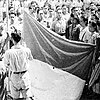Operation Product
| Operation Product | |||||||||
|---|---|---|---|---|---|---|---|---|---|
| Part of the Indonesian National Revolution | |||||||||
    Clockwise from top left: | |||||||||
| |||||||||
| Belligerents | |||||||||
|
|
| ||||||||
| Commanders and leaders | |||||||||
| |||||||||
| Units involved | |||||||||
| Indonesian Air Force |
Royal Netherlands East Indies Army
| ||||||||
| Strength | |||||||||
| 10 Divisions in Java, 6 Divisions in Sumatra; ~195,000 combatants | 3 Divisions in Java, 3 Brigades in Sumatra; ~95,000 combatants | ||||||||
Operation Product was a Dutch military offensive against areas of Java and Sumatra controlled by the
The offensive was launched in violation of the Linggadjati Agreement between the de facto Republic and the Netherlands. The offensive resulted in the Dutch reducing Republican-held areas to smaller areas of Java and Sumatra, split by Dutch-held areas.[1]
Background
Netherlands abrogated the treaty and conducted military offensive toward Indonesian held territories due to by several factors:
Financial -- the ~120,000 inactive Dutch soldiers, which includes significant number of Dutch-born conscripts, in Java was a significant financial burden on the Netherlands after the ravages of World War II.
The Dutch military estimated they would need two weeks to secure Republican-held cities and six months for the whole of the Republican territory.[3] The offensive was intended to not include an attack on Yogyakarta, seat of the Republican government, due to high expected costs of fighting there.[citation needed]
Offensive
On 21 July, Dutch, whose forces armed with US produced lend-lease equipment and trained in modern warcraft, deployed three divisions in Java and three brigades in less-densely populated Sumatra. Operation Product in East Java consisted of three landing operations: Product North in Pasir Poetih, Situbondo, Product South in Meneng Bay, north of Banyuwangi, and Product East in Porong, Sidoarjo. Landings were supported destroyers, corvettes, minesweepers, patrol vessels, landing ships and vessels such as LSTs, LCIs, LCTs and LCVPs, tugboats and pontoons from Surabaya. [5] The operation resulted in the occupation of large, economically productive parts of Java and Sumatra. Republican army (Tentara Nasional Indonesia or TNI) ) tried to slow the Dutch advance by blowing up bridges, setting up roadblocks, laying ambushes and detonating roadside bombs. The aim of this was to be able to bring their troops to safety and, if possible, to apply the scorched earth tactic. A direct confrontation with the Dutch troops, who had much greater firepower, was avoided as much as possible.
Nevertheless, the TNI and its allies continued to conduct guerrilla operations from the rural areas in Dutch-controlled territory.
Aftermath
The operation is rated as a military and economical success, as the Dutch managed to take over economically productive areas in Java and Sumatra, but a political setback as it attracted international attention to what was previously seen as an internal Dutch politic, and thus condemnation from other countries. Despite the government of the
See also
- Politionele acties
- 1947 Yogyakarta Dakota accident
- Rawagede massacre
References
Footnotes
- ^ a b Vickers (2005), p. 99
- ^ Cribb 2000, p. 156.
- ^ a b Ricklefs (1991), p. 225
- ^ Kahin (2003), p. 27
- ^ "Strijd in Nederlands-Indie (1945 tot 1950, algemeen)". nederlandsekrijgsmacht.nl (in Dutch). Archived from the original on 1 February 2023. Retrieved 21 November 2023.
{{cite web}}: CS1 maint: bot: original URL status unknown (link) - ^ Jackson (2008), p. 23
- ^ Spruyt (2005), p. 150
- ^ Ide Anak Agung Gde Agung 1996, p. 264.
- ^ Kahin (2003), p.29
Bibliography
- Ide Anak Agung Gde Agung (1996) [1995]. From the Formation of the State of East Indonesia Towards the Establishment of the United States of Indonesia. Translated by Owens, Linda. Yayasan Obor. ISBN 979-461-216-2.
- Cribb, Robert (2000). Historical Atlas of Indonesia. Richmond, Surrey, UK: Curzon Press. ISBN 0-7007-0985-1.
- Jackson, Robert (2008). Modern Military Aircraft in Combat. London: Amber Books.
- Ricklefs, M.C. (1993). A History of Modern Indonesia Since c. 1300. San Francisco: Stanford University Press.
- Vickers, Adrian (2005). A History of Modern Indonesia. Cambridge University Press. ISBN 0-521-54262-6.
- Spruyt, Hendrik (2005). Ending Empire: Contested Sovereignty and Territorial Partition. Cornell University Press. ISBN 0-801-48972-5.

